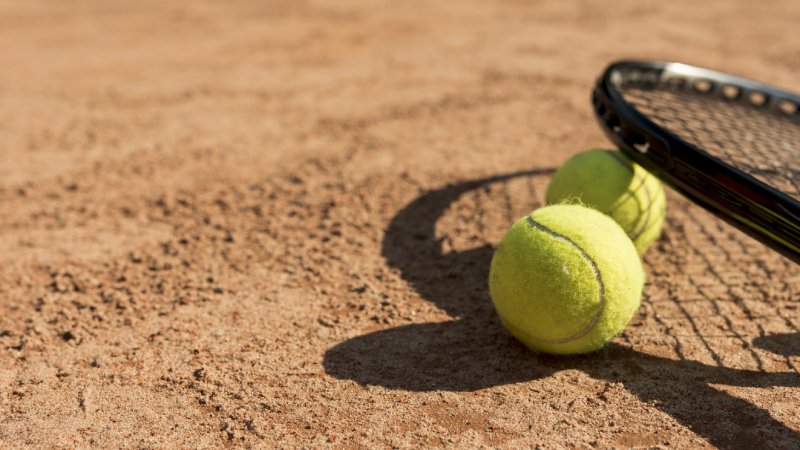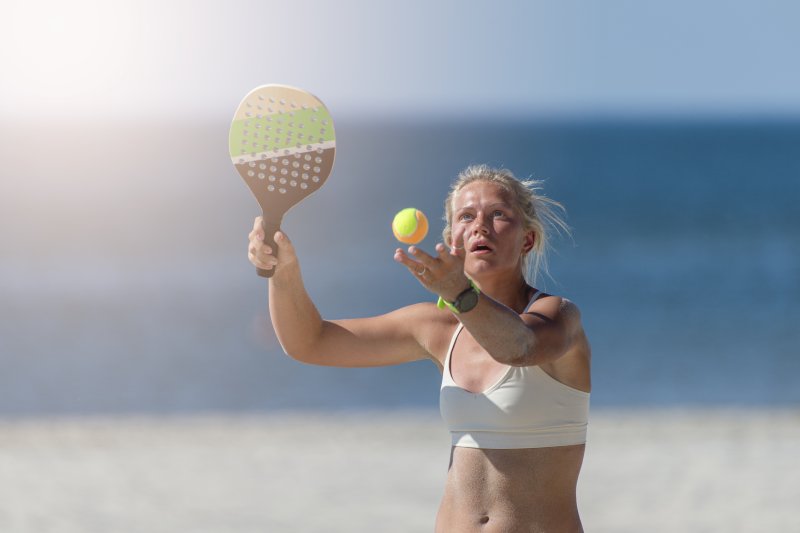Beach tennis is an energetic version of tennis played on a sandy beach. It can be played individually or in teams of two, usually between two players. Beach tennis has similar rules to traditional tennis, but matches are played on specially designed courts on the beach. The sand on the court adds an additional challenge and helps players develop their mobility. This makes the sport not only physically challenging but also strategically challenging.
Beach tennis is known as both a fun and challenging sport. Players require quick reflexes and good coordination to send the ball into their opponent’s court. The sand surface can affect the ball’s speed and slow down players’ movements, making the game fast-paced and strategic. Furthermore, beach tennis is often an outdoor activity, providing players with the opportunity to enjoy the sunny weather. These characteristics make the sport a social and recreational activity.
Beach tennis has become a popular sport worldwide, with various tournaments and events held on many beaches. The sport’s popularity has made it an attractive option for both amateur and professional players. Beach tennis promotes a healthy lifestyle while fostering social interaction and team spirit. In short, beach tennis is an excellent option for both those seeking a fun sporting experience and those looking to improve their physical fitness.

How to Play Beach Tennis?
Beach tennis is a dynamic version of tennis played on the beach, offering an energetic and fun game. Here are the basic rules and steps for playing beach tennis:
Playground and Equipment
- Playing Area : Beach tennis is typically played on a sand court. The court is typically 8×16 meters, smaller than standard tennis courts. A net is located in the center of the court.
- Equipment : Players use beach tennis bats instead of tennis racquets. Beach tennis bats are generally lighter and more durable. Additionally, the ball used is slightly lighter and softer than a tennis ball.
Basic Rules
- Number of Players : Beach tennis is typically played by teams of two, either singles or doubles. In doubles, there are two players per team.
- Serving : Play begins with a player serving the ball to the opposing team’s court. The serve is made from the back line and must not touch the net.
- Playing Rules : After the ball is served, both teams must receive and return it without it touching the ground. The ball must bounce only once before being returned to the other team. Furthermore, the ball must not touch the net or go out of play.
- Scoring : Beach tennis generally has a scoring system similar to tennis rules. However, in some tournaments or amateur games, the scoring system may be modified. Generally, a set is played to six games, and a match usually consists of two or three sets.
Game Strategy
- Positioning and Movement : Sand slows down movement, so it’s important for players to fine-tune their speed and position. Players must move strategically to control the ball accurately and execute accurate shots.
- Stroking Techniques : Beach tennis is similar to tennis in terms of strokes, but requires more attention and strength due to the sand surface. Players must use strong and accurate techniques to control the ball and execute effective strokes.
Beach tennis is both fun and physically challenging, offering players the opportunity to enjoy themselves on the beach. The sport requires quick reflexes, good strategy, and endurance, making it both a recreational and competitive activity.

What are the benefits of playing beach tennis?
- Physical Health and Conditioning: Beach tennis is an active sport, so playing it regularly improves overall physical fitness. Moving on a sandy surface strengthens muscles and improves cardiovascular fitness. Players perform a variety of movements that increase speed, agility, and endurance. Furthermore, the natural resistance offered by the sandy surface helps strengthen leg and core muscles.
- Coordination and Balance Development : Success in beach tennis requires good hand-eye coordination and balance. Understanding how the ball moves on the sand and timing it correctly improves players’ coordination skills. These skills lead to better motor skills and balance during play and in everyday life.
- Stress Reduction and Mental Health: Played outdoors, especially on the beach, this sport encourages spending time in nature and outdoor activities. Sunlight and sea air can have positive effects on mental health and reduce stress levels. The endorphins released during physical activity increase feelings of happiness and have an enhancing effect on overall mood.
- Social Interaction and Teamwork : Beach tennis encourages social interaction and teamwork because it’s a sport typically played with friends or family. This can strengthen social bonds and provide a fun competitive environment. Playing in pairs, in particular, helps develop teamwork and communication skills.
- Calorie Burning and Weight Management: Beach tennis, an energetic and dynamic sport, is effective in burning calories. Moving on sand allows you to expend more energy, which can help with weight management. Playing it regularly can boost metabolism and help maintain a healthy weight.
- Coordination and Strategy Development : Beach tennis requires players to develop both strategic thinking and quick reflexes. Players must anticipate their opponents’ moves while also developing their own strategies. This can increase mental acuity and improve problem-solving skills.



